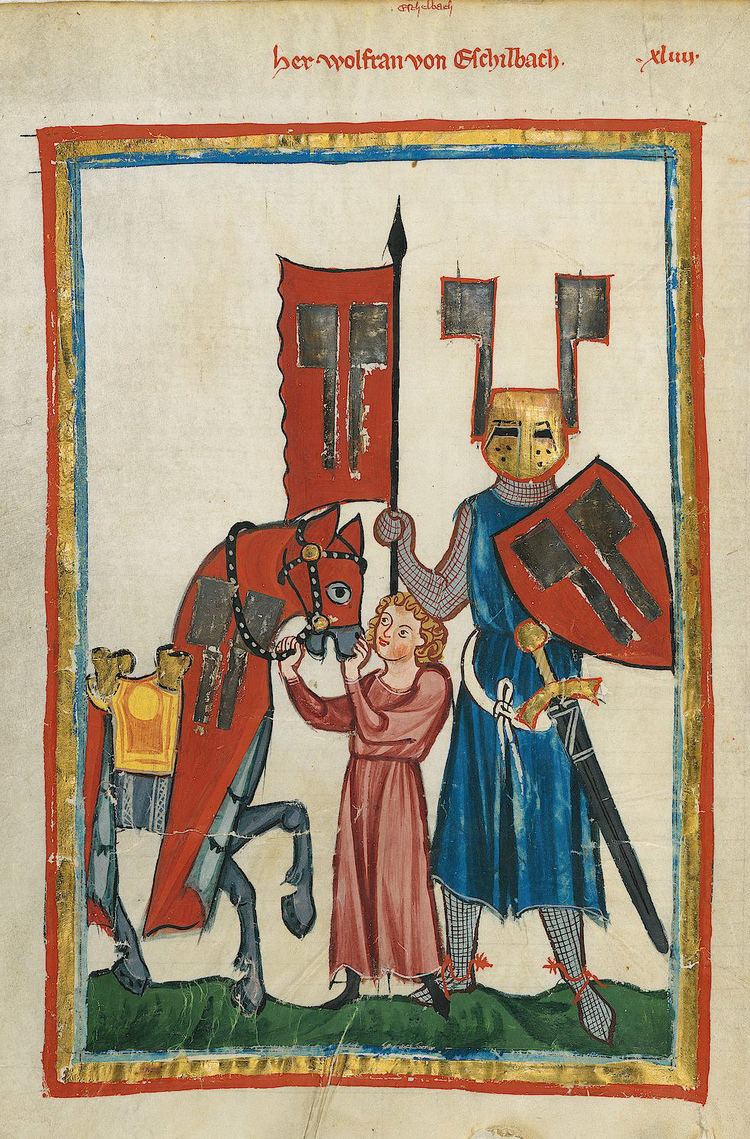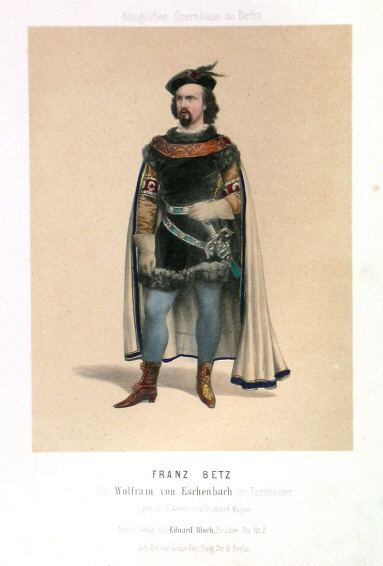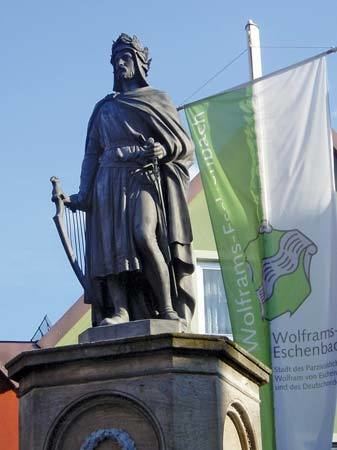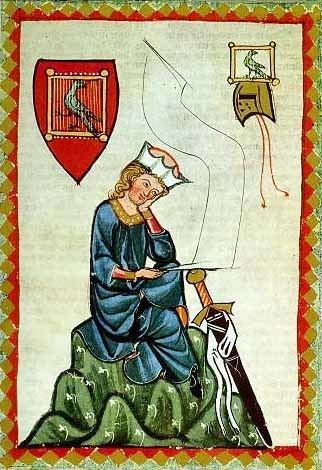Name Wolfram Eschenbach Role Poet | ||
 | ||
Books Parzival, Titurel, Willehalm: Titurel Similar People Walther von der Vogelweide, Auguste Lechner, Richard Wagner, Andre Lefevere | ||
Minnesang wolfram von eschenbach ich han nach lieben friunde
Wolfram von Eschenbach (c. 1160/80 – c. 1220) was a German knight and poet, regarded as one of the greatest epic poets of medieval German literature. As a Minnesinger, he also wrote lyric poetry.
Contents
- Minnesang wolfram von eschenbach ich han nach lieben friunde
- Sigunes klage wolfram von eschenbach
- Life
- Parzival
- Titurel and Willehalm
- Lyric poetry
- Reception
- References
Sigunes klage wolfram von eschenbach
Life

Little is known of Wolfram's life. There are no historical documents which mention him, and his works are the sole source of evidence. In Parzival he talks of wir Beier ("we Bavarians"); the dialect of his works is East Franconian. This and a number of geographical references have resulted in the present-day Wolframs-Eschenbach, until 1917 Obereschenbach, near Ansbach in present-day Bavaria, being officially designated as his birthplace. However, the evidence is circumstantial and not without problems - there are at least four other places named Eschenbach in Bavaria, and Wolframs-Eschenbach was not part of the Duchy of Bavaria (Altbayern) in Wolfram's time.

The arms shown in the Manesse manuscript come from the imagination of a 14th-century artist, drawing on the figure of the Red Knight in Parzival, and have no heraldic connection with Wolfram.

Wolfram's work indicates a number of possible patrons (most reliably Hermann I of Thuringia), which suggests that he served at a number of courts during his life. In his Parzival he claims he is illiterate and recorded the work by dictation, though the claim is treated with scepticism by some scholars.
Parzival

Wolfram is best known today for his Parzival, sometimes regarded as the greatest of all German epics from that time. Based on Chrétien de Troyes' Perceval, le Conte du Graal, it is the first extant work in German to have as its subject the Holy Grail (in Wolfram's interpretation a gemstone). In the poem, Wolfram's narrator expresses disdain for Chrétien's (unfinished) version of the tale, and states that his source was a poet from Provence called Kyot. Some scholars believe Wolfram might have meant Guiot de Provins (though none of the latter's surviving works relate to the themes of Parzival), however others believe Kyot was simply a literary device invented by Wolfram to explain his deviations from Chrétien's version.
Titurel and Willehalm

Wolfram is the author of two other narrative works: the fragmentary Titurel and the unfinished Willehalm. These were both composed after Parzival, and Titurel mentions the death of Hermann I, which dates it firmly after 1217. Titurel consists of two fragments, which tell us the story of Schionatulander and Sigune (lovers that were already depicted in Parzival). First fragment deals with the birth of love between main characters. The second one is quite different. Schionatulander and Sigune spend some alone time in the forest, when all of a sudden their peace is disturbed by the mysterious dog, whose leash contains a story (it's written in rubies). Siguna eagers to read the story, but dog runs away from them. Schionatulander sets off to find him, but, as we already know from Parzival, he dies trying.

Willehalm — the unfinished poem based on Old French chanson de geste Aliscans, which recounts the story of battles between christian and saracen armies. Willehalm was quite a significant work, as survived 16 manuscripts in total. The plot goes like that: main character kidnaps an eastern princess and, after turning her into christianity, marries her. Pegan king gathers an army to fight his daughter back. The poem has a lot of distinguishing features of medieval literature, such as: victory over larger pagan army, touching death of young knight Vivian, Willehalm’s nephew, who’s the example of chivalry courage and spiritual purity etc.
Lyric poetry
Wolfram's nine surviving songs, five of which are dawn-songs, are regarded as masterpieces of Minnesang. Dawn-songs recount the story of a knight who spends the night with his beloved lady, but at dawn has to slip away unnoticed. Mostly it's the lady who wakes the knight up in the morning, but sometimes this mission is made by the watchman. No melodies survived.
Reception
The 84 surviving manuscripts of Parzival, both complete and fragmentary, indicate the immense popularity of Wolfram's major work in the following two centuries. Willehalm, with 78 manuscripts, comes not far behind. Many of these include a continuation written in the 1240s by Ulrich von Türheim under the title Rennewart. The unfinished Titurel was taken up and expanded around 1272 by a poet named Albrecht, who is generally presumed to be Albrecht von Scharfenberg and who adopts the narrative persona of Wolfram. This work is referred to as the Jüngere Titurel (Younger Titurel).
The modern rediscovery of Wolfram begins with the publication of a translation of Parzival in 1753 by the Swiss scholar Johann Jakob Bodmer. Parzival was the main source Richard Wagner used when writing the libretto to his opera, Parsifal. Wolfram himself appears as a character in another Wagner opera, Tannhäuser.
In Hugo Pratt's comic book The Secret Rose, Corto Maltese speaks to a mural painting of Wolfram. In this book Corto is searching for the Holy Grail.
